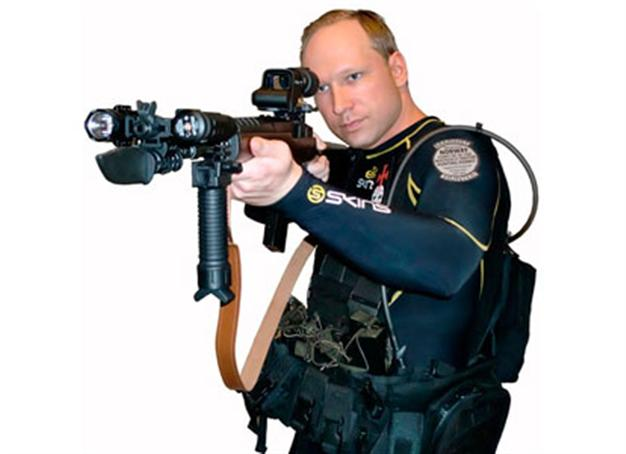
A picture of Anders Behring Breivik. REUTERS Photo
Psychiatrists tasked with determining the mental state of Anders Behring Breivik when he carried out twin attacks in Norway have found he was insane at the time of the crime, the VG daily reported Tuesday on its website.
If confirmed, this would mean that the rightwing extremist who killed 77 people four months ago cannot be sentenced to prison but must undergo psychiatric care in a closed mental institution.
"The court-appointed psychiatrists have concluded that Anders Behring Breivik was sick when he killed 77 people," VG writes, without revealing its sources.
The two psychiatrists, Synne Serheim and Torgeir Husby, delivered their finding to the Oslo district court Tuesday morning, and the prosecutor's office is scheduled to present the main outlines of the 240-page report at a press conference at 1:00 pm (1200 GMT).
According to VG, the psychiatrists concluded that Behring Breivik, 32, was suffering from a "psychosis" -- a mental state that could alter his judgement leading up to and at the time of the attacks.
Their report still needs to be examined by a legal medical commission to ensure that it fulfils all the professional requirements.
In the end, it will be up to the court to determine if Behring Breivik can be held accountable for his actions, but it is common practice in Norway for courts to follow expert recommendations.
The July 22 massacre, the deadliest attacks committed in Norway in the post-war period, have profoundly shocked the normally-tranquil nation.
Behring Breivik first set off a car bomb outside the government buildings in Oslo, killing eight people.
After that, he went to the island of Utoeya, some 40 kilometres (25 miles) northwest of Oslo, where, disguised as a police officer, he spent nearly an hour and a half methodically killing another 69 people, most of them teenagers.